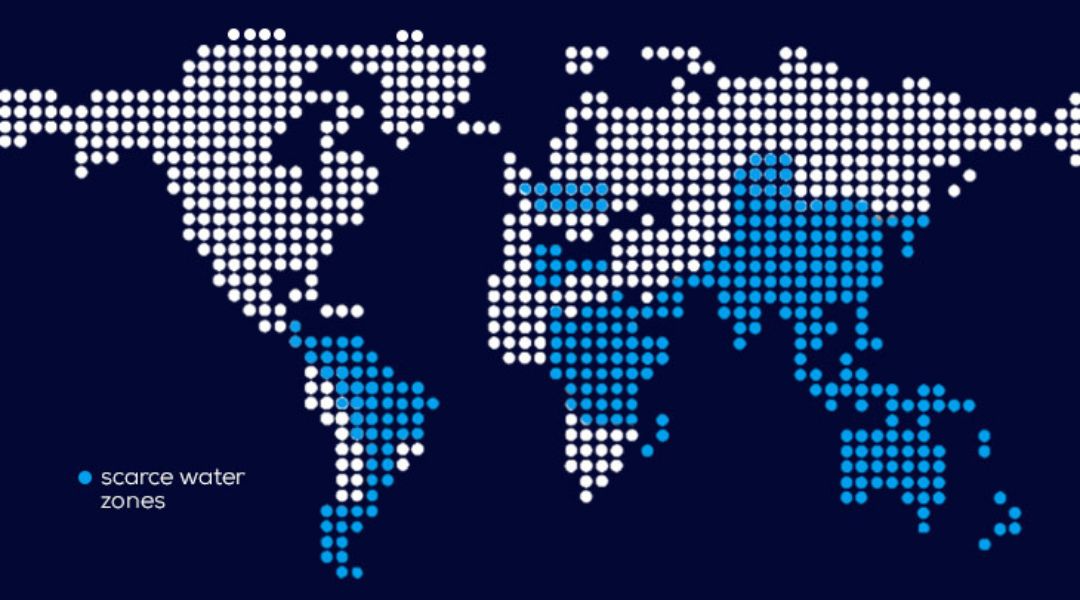
Water scarcity, widely understood and explained as the lack of safe drinking water is one of the leading problems affecting over 1.1 billion people in the world. That is approximately one fifth of the planet. One in every three people, in every continent, faces water scarcity.
According to the Joint Monitoring Programme for Water Supply and Sanitation set up by the World Health Organization (WHO) and United Nations Children’s Fund (UNICEF), safe drinking water is “…water with microbial, chemical and physical characteristics that meets WHO guidelines or national standards on drinking water quality.” This scarcity is not limited to drinking water, however. Sources of freshwater and groundwater supplies are dwindling. Atmospheric Water Generators like Akvo require no source of water as these create water from the humidity in the air. The machines replicate the natural process of condensation by simulating dew point, which allows them to produce water continuously, even in low humidity conditions. This could well be the solution to the current global water crisis.
Economic water scarcity may arise in a situation where “… human, institutional, and financial capital limit access to water even though water in nature is available locally to meet human demands.” There is economic scarcity of water in most of Africa and parts of the Indian subcontinent. Jordan and Libya are also water stressed. There have been protests in Jordan already due to massive power cuts because of the inability of hydraulic power plants to produce enough electricity. Economic scarcity of water is characterised by insufficient investment in infrastructure meant to supply and distribute water equitably in areas where inhabitants do not have the monetary wherewithal to use a source of water that is adequate for them. Getting enough water for domestic purposes is difficult. These areas are especially vulnerable to seasonal fluctuations causing floods and drought. In some cases, there is infrastructure for the equitable distribution of water but it is not undertaken by the political machinery.
Physical scarcity of water is a situation in which “…water resources development is approaching or has exceeded sustainable limits.“ In this situation the supply of water for human needs and the ecosystem is not nearly equal to the demand. Physical water scarcity often arises in dry, arid regions of the world. It could also happen in areas where there is enough water but just not enough to meet the growing needs of the human population like irrigation and energy generation for which there is overdevelopment of hydraulic infrastructure. It is characterised by severe and widespread environmental degradation and a decline in groundwater levels. In some regions, one group is preferred over others when it comes to allocating water. Extensive areas in Central Asia, parts of North Africa and South Australia face a physical scarcity of water. A study conducted in 2007, by the International Water Management Institute in Sri Lanka, found that 1.2 billion people or more experience physical scarcity of water where they live.
In addition, an estimated 2.4 billion people do not have access to sanitation and 1.1 billion do not have access to clean water. The statistics are alarming as they should be. It is time for political and economic institutions to sit up and take notice. The world, as a whole, is confronted today with a global water crisis on an unprecedented scale. Sustainable water usage and recycling of wastewater is the need of the hour. Rainwater harvesting and drip irrigation are effective ways to reduce water scarcity. Reducing water wastage and desalination of salt water for human consumption and irrigation are examples of sustainable water management. Also, a new source of freshwater needs to be found. This is where Akvo Atmospheric Water Generators can play a role. These machines use available water vapour in the air to produce water. It draws air through vents and pass it through a condenser. The air is filtered through an antimicrobial air filter to remove impurities. The condenser converts water vapour in the air from gas to a liquid state. The water is purified with ozone. This water is then fit for human consumption.
Contact us for more information.
